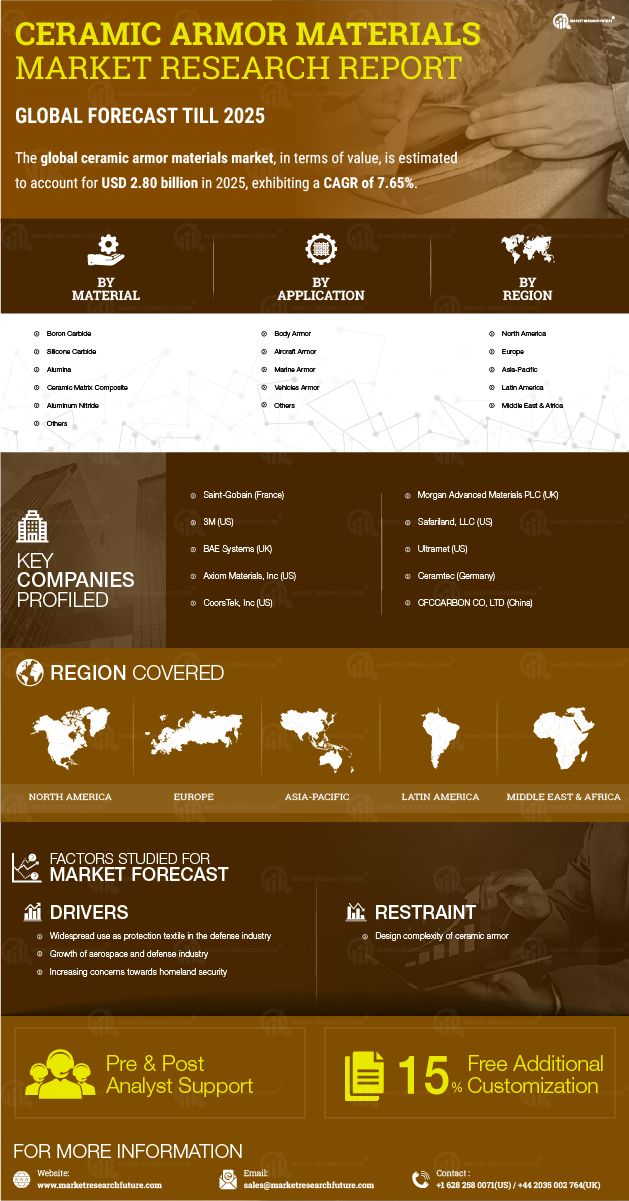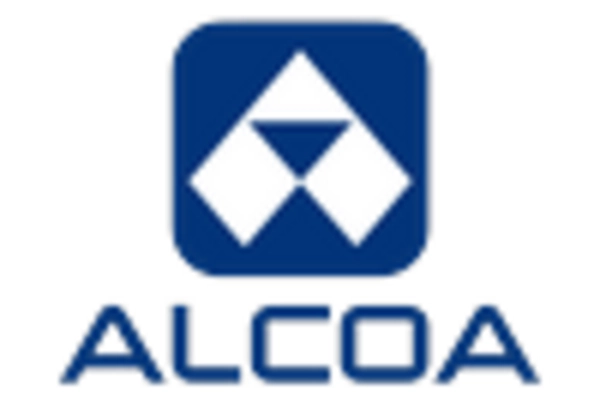Rising Geopolitical Tensions
The Ceramic Armor Materials Market is influenced by the rising geopolitical tensions across various regions. As nations prioritize national security and defense capabilities, there is a marked increase in military spending, particularly in countries facing security threats. This trend has led to a heightened demand for advanced armor solutions, including ceramic armor, which is favored for its lightweight and high-performance characteristics. According to recent data, defense budgets in several countries have seen an increase of approximately 5-10% annually, directly impacting the procurement of advanced armor materials. Consequently, manufacturers in the ceramic armor sector are likely to benefit from this increased demand, as governments seek to enhance their military capabilities and protect personnel in conflict zones.
Emerging Applications in Civilian Sectors
The Ceramic Armor Materials Market is expanding beyond traditional military applications, with emerging opportunities in civilian sectors. Industries such as automotive, aerospace, and construction are increasingly recognizing the benefits of ceramic armor materials for protective applications. For instance, the automotive sector is exploring the use of ceramic composites in vehicle armor to enhance passenger safety without significantly increasing weight. Market analysis suggests that the civilian applications segment could grow at a rate of 5% annually, driven by the need for enhanced safety measures in various industries. This diversification not only broadens the market scope but also encourages innovation in ceramic armor technologies, as manufacturers seek to meet the specific requirements of different sectors.
Technological Advancements in Armor Design
The Ceramic Armor Materials Market is experiencing a surge in technological advancements that enhance the performance and effectiveness of armor systems. Innovations in material science, such as the development of lightweight composites and advanced ceramics, are driving this trend. These materials not only provide superior ballistic protection but also reduce the overall weight of armor systems, making them more suitable for various applications, including military and law enforcement. The integration of smart technologies, such as sensors and adaptive materials, further augments the capabilities of ceramic armor. As a result, the market is projected to grow significantly, with estimates suggesting a compound annual growth rate of over 7% in the coming years. This growth is indicative of the increasing reliance on advanced armor solutions in both defense and civilian sectors.
Growing Demand from Law Enforcement Agencies
The Ceramic Armor Materials Market is witnessing a growing demand from law enforcement agencies, driven by the need for enhanced personal protection for officers. As crime rates fluctuate and public safety concerns rise, police forces are increasingly adopting advanced armor solutions, including ceramic body armor. This shift is reflected in market data, which indicates that the law enforcement segment is expected to account for a significant share of the ceramic armor market, with projections suggesting a growth rate of around 6% over the next few years. The lightweight nature and superior ballistic resistance of ceramic materials make them an ideal choice for law enforcement applications, thereby propelling the market forward. Additionally, the emphasis on officer safety and the need for effective protective gear are likely to sustain this demand in the foreseeable future.
Increased Investment in Defense Research and Development
The Ceramic Armor Materials Market is benefiting from increased investment in defense research and development (R&D) initiatives. Governments and private entities are allocating substantial resources to explore innovative materials and technologies that can enhance the performance of armor systems. This focus on R&D is crucial, as it leads to the discovery of new ceramic composites and manufacturing techniques that improve the durability and effectiveness of armor. Recent reports indicate that defense R&D spending has risen by approximately 8% in several countries, reflecting a commitment to advancing military capabilities. As a result, the ceramic armor sector is likely to see a surge in new product offerings and improved performance standards, which could further stimulate market growth and attract new players to the industry.

















Leave a Comment